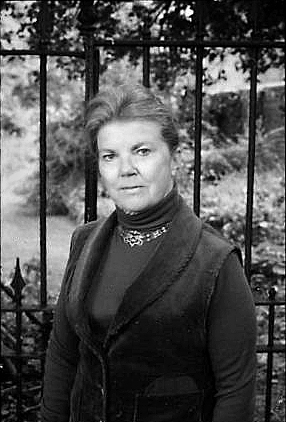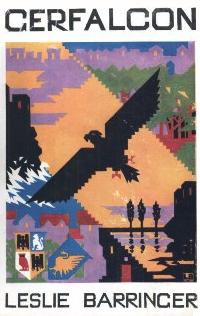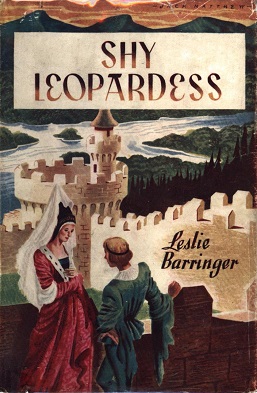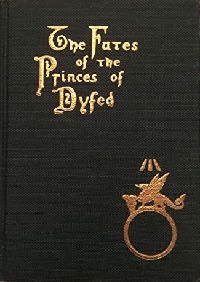
Michael John Moorcock is an English–American writer, particularly of science fiction and fantasy, who has published a number of well-received literary novels as well as comic thrillers, graphic novels and non-fiction. He has worked as an editor and is also a successful musician. He is best known for his novels about the character Elric of Melniboné, which were a seminal influence on the field of fantasy in the 1960s and 1970s.

Eric Brighteyes is an epic Viking novel by H. Rider Haggard that concerns the adventures of its eponymous principal character in 10th-century Iceland. The novel was first published in 1891 by Longmans, Green & Company. It was illustrated by Lancelot Speed.

Joan Delano Aiken was an English writer specialising in supernatural fiction and children's alternative history novels. In 1999 she was awarded an MBE for her services to children's literature. For The Whispering Mountain, published by Jonathan Cape in 1968, she won the Guardian Children's Fiction Prize, a book award judged by a panel of British children's writers, and she was a commended runner-up for the Carnegie Medal from the Library Association, recognising the year's best children's book by a British writer. She won an Edgar Allan Poe Award (1972) for Night Fall.

Damien Francis Broderick is an Australian science fiction and popular science writer and editor of some 74 books. His science fiction novel The Dreaming Dragons (1980) introduced the trope of the generation time machine, his The Judas Mandala (1982) contains the first appearance of the term "virtual reality" in science fiction, and his 1997 popular science book The Spike was the first to investigate the technological singularity in detail.
Graham Diamond is an American author who writes across multiple genres, including fantasy and science fiction. He has published twenty novels with more than a million copies of his books in print.

Jess Nevins is an American author and research librarian best known for annotated guides and encyclopedias covering Victoriana, comic books, genre fiction and pulp fiction. Among Nevin's books are Encyclopedia of Fantastic Victoriana,Horror Fiction in the 20th Century and Encyclopedia of Golden Age Superheroes. He has been a recipient and finalist for a number of honors, including the World Fantasy, Sidewise, and Locus Awards.

The Newcastle Forgotten Fantasy Library was a series of trade paperback books published in the United States by the Newcastle Publishing Company between 1973 and 1980. Presumably under the inspiration of the earlier example set by the Ballantine Adult Fantasy series, the series reissued a number of works of fantasy literature that had largely been forgotten, being out of print or otherwise not easily available in the United States, in durable, illustrated trade paperback form with new introductions. For a number of works the Library’s editions constituted the first U.S. or first paperback edition. Together with the earlier series from Ballantine Books, it contributed to the renaissance of interest in the fantasy genre of the 1970s.
Leslie Barringer (1895–1968) was an English editor and author of historical novels and historical fantasy novels, best known for the latter.

Harold Warner Munn was an American writer of fantasy, horror and poetry, best remembered for his early stories in Weird Tales. He was an early friend and associate of authors H. P. Lovecraft and Seabury Quinn. He has been described by fellow author Jessica Amanda Salmonson, who interviewed him during 1978, as "the ultimate gentleman" and "a gentle, calm, warm, and good friend." He was known for his intricate plotting and the careful research that he did for his stories, a habit he traced back to two mistakes made when he wrote his early story "The City of Spiders".

Gerfalcon is a fantasy novel by Leslie Barringer, the first book in his three volume Neustrian Cycle. The book was first published in 1927 by Heinemann in the United Kingdom and Doubleday in the United States. Its significance was recognized by its republication in 1973 by Tom Stacey in the UK and in March, 1976 by the Newcastle Publishing Company in the US, as the seventh volume of its celebrated Newcastle Forgotten Fantasy Library series. This Newcastle edition was reprinted twice, once by Newcastle itself in 1977 and once by Borgo Press in 1980.

Shy Leopardess is a fantasy novel by Leslie Barringer, the third and last book in his three volume Neustrian Cycle. The book was first published in the United Kingdom by Methuen in 1948. Its significance was recognized by its republication in the United States by the Newcastle Publishing Company as the thirteenth volume of the Newcastle Forgotten Fantasy Library series in October, 1977. The Newcastle edition was reprinted by Borgo Press in 1980.

Terence William (Terry) Dowling, is an Australian writer and journalist. He writes primarily speculative fiction though he considers himself an "imagier" – one who imagines, a term which liberates his writing from the constraints of specific genres. He has been called "among the best-loved local writers and most-awarded in and out of Australia, a writer who stubbornly hews his own path ."
The Story of the Glittering Plain is an 1891 fantasy novel by William Morris, perhaps the first modern fantasy writer to unite an imaginary world with the element of the supernatural, and thus the precursor of much of present-day fantasy literature. It is also important for its exploration of the socialist themes that interested Morris.

Andrew Crumey is a novelist and former literary editor of the Edinburgh newspaper Scotland on Sunday. His works of literary fiction incorporate elements of speculative fiction, historical fiction, philosophical fiction and Menippean satire. Brian Stableford has called them "philosophical fantasies". The Spanish newspaper El Mundo called Crumey "one of the most interesting and original European authors of recent years."

When the Birds Fly South is a lost race fantasy novel by American writer Stanton A. Coblentz, defined as a "significant tale ... involving avian theriomorphy." It was first published in hardcover by The Wings Press, Mill Valley, California in 1945 and reprinted in 1951. Its importance in the history of fantasy literature was recognized by its republication by the Newcastle Publishing Company as the twenty-third volume of the Newcastle Forgotten Fantasy Library in April, 1980. The Newcastle edition was the first paperback edition, and had a new introduction by the author. Later editions were issued by Arno Press (1978) and Borgo Press (1980).

Aladore is a classic allegorical fantasy novel written by English poet Henry Newbolt. It was first published in hardcover by William Blackwood and Sons, Edinburgh, in 1914. An American edition from E. P. Dutton & Company, followed in 1915. The first paperback edition was issued by the Newcastle Publishing Company as the fifth volume of the Newcastle Forgotten Fantasy Library in September, 1975; this edition was reissued by Borgo Press in 1980. The book has been translated into German.

Golden Wings and Other Stories is a collection of fantasy short stories by British writer William Morris, first published in trade paperback by the Newcastle Publishing Company in March 1976 as the eighth volume of the celebrated Newcastle Forgotten Fantasy Library. The first hardcover edition was published by Borgo Press in 1980. It collects all of Morris's short stories originally published in The Oxford and Cambridge Magazine, a student magazine that ran for the 12 months of 1856. They were later republished in various collections of Morris's work. More recently the stories have been combined with Morris's other contributions to the magazine, including reviews, essays and poems, to form the expanded collection The Hollow Land and Other Contributions to the Oxford and Cambridge Magazine, published by Forgotten Books in June, 2010
Heart of the World is an 1895 book by H. Rider Haggard about a lost Mayan city in Mexico. Its importance in the history of fantasy literature was recognized by its republication by the Newcastle Publishing Company as the tenth volume of the Newcastle Forgotten Fantasy Library in September, 1976.

The Fates of the Princes of Dyfed is a fantasy novel written by Welsh author and theosophist Kenneth Morris under the pseudonym Cenydd Morus, a Celticized version of his name, and illustrated by R. Machell. It was first published in hardcover by Aryan Theosophical Press, Point Loma, California, in 1914. Its significance was recognized by its republication by the Newcastle Publishing Company as the fifteenth volume of the Newcastle Forgotten Fantasy Library series in April, 1978. The Newcastle edition was reprinted by Borgo Press in 1980. An ebook edition was issued by Theosophical University Press in 2000.

The type of romance considered here is mainly the genre of novel defined by the novelist Walter Scott as "a fictitious narrative in prose or verse; the interest of which turns upon marvellous and uncommon incidents", in contrast to mainstream novels which realistically depict the state of a society. These works frequently, but not exclusively, take the form of the historical novel. Scott's novels are also frequently described as historical romances, and Northrop Frye suggested "the general principle that most 'historical novels' are romances". Scott describes romance as a "kindred term", and many European languages do not distinguish between romance and novel: "a novel is le roman, der Roman, il romanzo".















